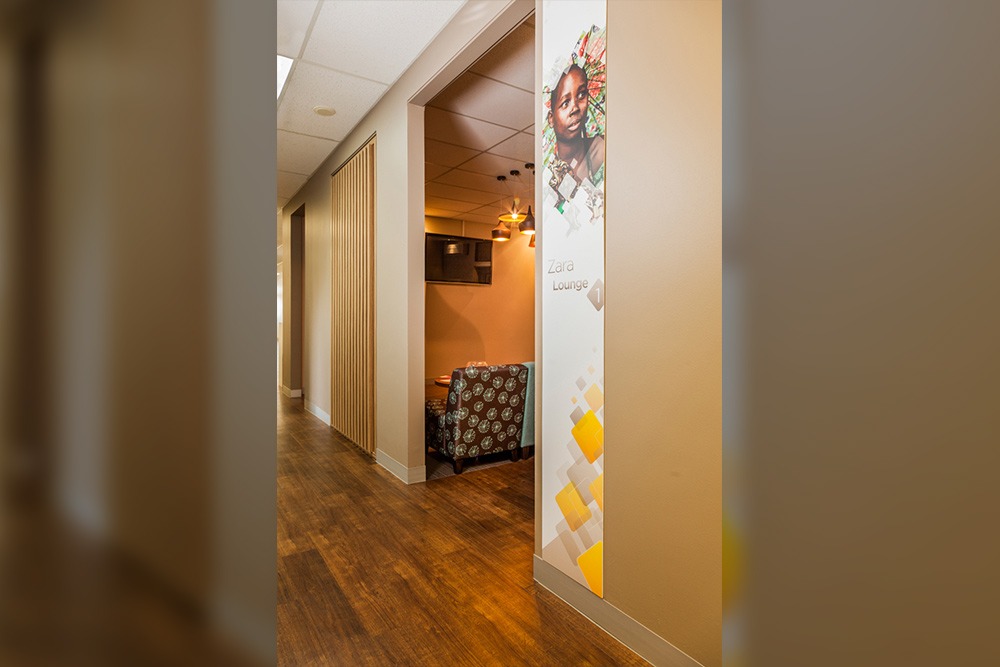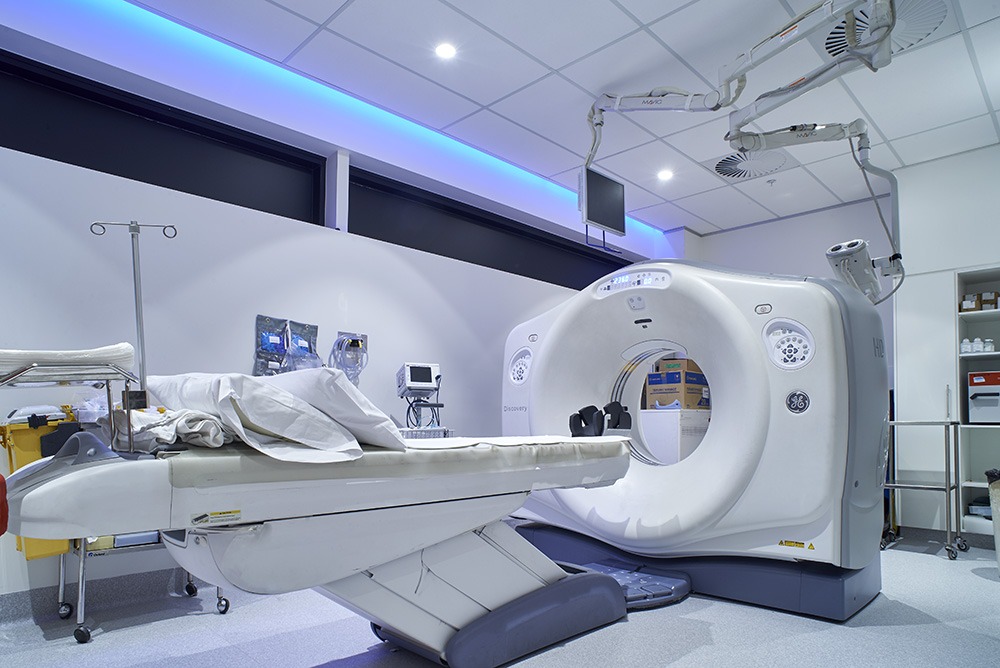The thoughtful planning and execution of hospital interior design are paramount in constructing an atmosphere that influences the emotions of patients and staff members and contributes to their overall well-being, comfort, and ability to navigate the space easily. Modern healthcare interior designers recognise the importance of designing spaces that not only meet functional requirements but also create aesthetically pleasing, inviting, and comfortable environments that promote a sense of well-being and relaxation for all who enter. By prioritising patient experience and incorporating elements that enhance comfort, healthcare facilities can significantly impact patient satisfaction and retention, ultimately contributing to the facility’s overall success.
Importance of Design in Healthcare
Healthcare design encompasses the interior and exterior of medical buildings, including the architecture and layout of the space. This includes colour, light, sound, furniture, materials, and signage. By considering these key elements, healthcare design experts can create an environment conducive to patient well-being. The focus is to create an atmosphere that is calming, comfortable and inviting whilst still meeting the stringent regulations set out by the healthcare industry.
Aesthetics alone are not enough when designing a functional healthcare space. Healthcare interior designers need to consider the unique needs of the patients, and medical practitioners using the area are essential. This includes incorporating elements such as easy-to-read signage, ergonomic furniture, and appropriate colour schemes that are visually pleasing and promote healing.
Designing medical and healthcare spaces requires carefully balancing regulatory compliance and creative design. Safety requirements are paramount, so strict rules must be followed to ensure that everyone in the space is secure and relaxed. Furthermore, interior design can influence how patients and personnel perceive the environment, leading to feelings of comfort and well-being.
Incorporating healthcare design for hospitals and other medical buildings has many benefits, from increased patient satisfaction to better communication between staff and patients. Healthcare design aims to create an environment where medical personnel can provide the best care possible for their patients. With a combination of design elements and carefully thought-out plans, healthcare professionals can ensure that their facilities are designed in a way that promotes healing and helps their patients to feel comfortable and relaxed.
Goals of Interior Design in Healthcare
Hospital interior design can profoundly impact the quality of care offered and the well-being of patients and staff. Good hospital interior design plays a vital role in providing patients with a comfortable and healing environment and creating safe and efficient spaces for hospital staff. Here are some of the key benefits of good hospital interior design:
- Improved Patient Experience: Hospital interior design can create a more pleasant experience for patients by providing them with a welcoming, comfortable, safe environment. This is especially important for vulnerable patients such as children, older persons, and those with disabilities. Hospital design in Australia should also consider features such as natural light, greenery and artwork to create a calming atmosphere.
- Enhanced Efficiency: Good hospital interior design can help improve the healthcare facility’s efficiency. By implementing an efficient workflow, patients and staff can benefit from increased productivity in the facility while assisting patients promptly with higher effectiveness. This includes incorporating innovative techniques such as colour-coded floor plans to ensure that staff can easily access the right areas and create functional work areas tailored to their needs.
Challenges in Hospital Interior Design
Healthcare interior designers have a challenging task when creating a healing environment in a hospital. There are numerous factors to consider and a balance to keep between regulations and innovative design. Not only do hospital interior designs need to create a safe, comfortable and calming atmosphere for patients, they also need to ensure staff well-being, provide easy access and follow regulatory standards.
Healthcare facilities must meet specific regulations, such as infection control guidelines. This can present a challenge when creating an aesthetically pleasing healthcare space. Healthcare interior designers must find a way to balance creativity, and patient needs while adhering to safety standards.
Designers must combine regulations, innovation and comfort when designing healthcare spaces to create a healing environment for patients and staff. In Australia, the National Safety and Quality Health Service (NSQHS) Standards provide a framework to help ensure the safety and quality of healthcare services. The standards set out regulations for patient well-being, security and privacy, medical equipment, communication and information management, among many other things.

The Key Elements of Hospital Interior Design
Creating a comfortable atmosphere is an integral part of hospital interior design. A soothing, calming atmosphere puts patients at ease and facilitates healing. Colours and design should create a pleasant and relaxed environment where people feel safe, secure, and comfortable.
Ambience
Hospital interior design should strive to create a serene and inviting environment for patients and visitors. Lighting and noise are two of the most critical elements in achieving this atmosphere, as both can significantly affect the overall ambience of the space. Lighting should be carefully balanced between natural and artificial sources, allowing natural light to benefit patient health while ensuring additional illumination where necessary. Lighting should be bright enough to enable people to see clearly without causing glare or eye strain while also being dim enough to create a relaxing atmosphere. Natural light should be maximised whenever possible through windows or skylights. If natural light isn’t available, it’s important to use LED lighting, which is more energy efficient and produces less heat than traditional lighting fixtures.
Although some noise can be soothing to some, too much sound can distract and hinder the healing process. A peaceful atmosphere can be cultivated by creating quiet zones with soundproof materials, and other areas can be lined with sound-dampening features such as carpets and hospital-grade furniture upholstery. Moreover, machines and appliances which emit noises, like elevators, air vents, and medical tools, should be eliminated from patients’ quarters. Conversations in private areas should remain quiet to respect the parties involved, including patients, their families, visitors, and staff.
The design of staff areas should focus on providing spaces that are comfortable, convenient, and conducive to work. This includes sites for eating, resting, and collaborating on projects. Staff areas should be equipped with modern technology and equipment to work efficiently and provide the best care possible. Semi-partitions in workspaces can boost concentration and productivity while keeping the airy design of an open concept.
Architectural Elements
Providing adequate parking for visitors and staff is essential in making a hospital environment comfortable and accessible. It reduces stress and anxiety for visitors and can also help streamline the process of visiting and leaving the hospital. Having ample parking will also allow staff to park in a convenient location near their workplace.
The layout of a hospital can have a significant impact on the patient experience. Healthcare architects must create interior designs that facilitate smooth navigation, offering an easily-followed flow of traffic and pathways that are accessible to all. The overall layout of the hospital should be designed in a way that is organised and well-ordered. A successful wayfinding system is fundamental for hospitals so visitors can easily navigate the building and find their destination. Clear signage, designated pathways, and a simple layout reduce stress and disarray while creating a more inviting atmosphere. Equally, an efficient workflow will optimise the use of staff, visibility of patients and response times to provide the required services to each patient on time. A good workflow design can boost productivity and minimise the risk of omissions or mistakes within the facility.
Areas for visitors and patients should be crafted to offer ease and amenity. These spaces should feature adequate seating, suitable illumination, and tranquil colours to create an inviting ambience. Additionally, visitor regions should be outfitted with services such as vending machines, lavatories, and television for diversion. Good hospital interior design also helps to reduce the risk of infection by creating an environment that is hygienic and easy to clean. It should incorporate surfaces that can be easily sanitised and adequate ventilation to keep the air clean and circulate air between different areas.
Interior Design Features
Colour is an essential part of interior design in hospitals, as it can help to create a calming atmosphere and reduce the stress and anxiety associated with hospitals. Different colours evoke mixed feelings, from bright and cheery to muted and calming. When selecting colours for hospital interiors, it’s important to choose soothing and not overly stimulating colours. Warm tones like beige, cream, and warm grey create a calming environment.
Patient care, comfort and safety are of utmost importance when choosing furniture for a healthcare facility; thus, furniture should offer enough room for visitors and patients to relax, be easy to clean and maintain and provide adequate support and mobility. Flooring is another crucial element of hospital interior design, as it allows for a safe and comfortable surface for patients, staff, and visitors. Choosing easy-to-clean and slip-resistant flooring, such as vinyl or linoleum, is an important consideration. Carpeting is not commonly advised in medical facilities due to the potential for the growth of bacteria and dust mites in the fibres.
Windows are also significant components of hospital interior design, as they supply natural lighting, which can help to lower stress and fatigue levels. It is essential to opt for energy-efficient windows with adequate sun protection so that they do not generate glare or cause overheating. Window installation should be designed in a way that ensures both confidentiality and security for patients and personnel.
Incorporating components of nature into the design of a hospital can offer numerous positive effects, such as lessening stress levels, enhancing air quality, and aiding in the recovery process. Natural elements like greenery, water features, artwork, or sculptures can all contribute to developing a calming atmosphere.

Finding a Balance
A balance must be achieved between meeting regulations and creating an innovative design. Rules are in place to ensure the safety and health of patients and staff, as well as the longevity of the facility. However, these regulations must be balanced with the need for innovative design that encourages healing and wellness, providing patients with a comfortable and homely atmosphere.
The outcome of this collaborative effort should be a safe and supportive environment where people can be healed, nurtured and restored. The result should also create a unique atmosphere conducive to healing and providing a sense of belonging. Furthermore, special consideration should be given to how the space will be used – different areas within a hospital will have different roles and therefore require different designs. For example, certain areas may require privacy screens and sound-absorbing materials, whereas others may call for seating areas or separate breakout zones.
Good hospital interior design aims to provide a functional and inspiring space for healthcare providers to focus on their primary mission – delivering high-quality care. Ultimately, by considering the key elements discussed here, hospitals and other healthcare facilities can create healing environments that provide comfort and support to patients, their families and hospital staff.
Benefits of Creating Healing Environments
When creating a healing environment, reducing environmental stressors, providing positive distractions, enabling social support, and giving a sense of control are all essential elements of hospital interior design.
Reducing Environmental Stressors:
- Utilise natural light whenever possible to reduce the strain of harsh fluorescent lighting.
- Incorporate sound masking technologies such as white noise or nature sounds to create a more calming environment.
- Use materials with muted tones and non-glare finishes to reduce visual stimulation.
Providing Positive Distractions:
- Incorporate art and décor that promote a sense of relaxation and calm while complying with infection control guidelines.
- Provide access to nature, such as plants, gardens, or fish tanks.
- Utilise technology such as digital displays and interactive spaces.
Enabling Social Support:
- Design private spaces with comfortable seating for visitors to meet with patients.
- Incorporate open, shared spaces for patients and family members to gather.
- Create patient lounges with entertainment and activities to bring people together.
Giving a Sense of Control:
- Provide accessible medical equipment and controls so patients can take charge of their care.
- Implementation of self-check-in stations can reduce the need for additional staffing and will encourage patients to interact with the space more efficiently. Consideration of having staff available at reach for patients who find technology challenging is imperative.
- Allow patients to customise their rooms with personal items.
- Incorporate spaces that allow for physical exercise and activities to encourage independence.
With decades of experience in healthcare design and construction across Australia, we will work with you to create the perfect hospital environment. Get in touch with us today to discuss your next hospital project. Our team of professionals is experienced in planning, designing and constructing healthcare facilities. With our comprehensive understanding of the challenges and requirements of healthcare design, we can help you create a healing and welcoming environment for your patients and staff. Contact us today to discuss your project and discover how we can make a difference.



